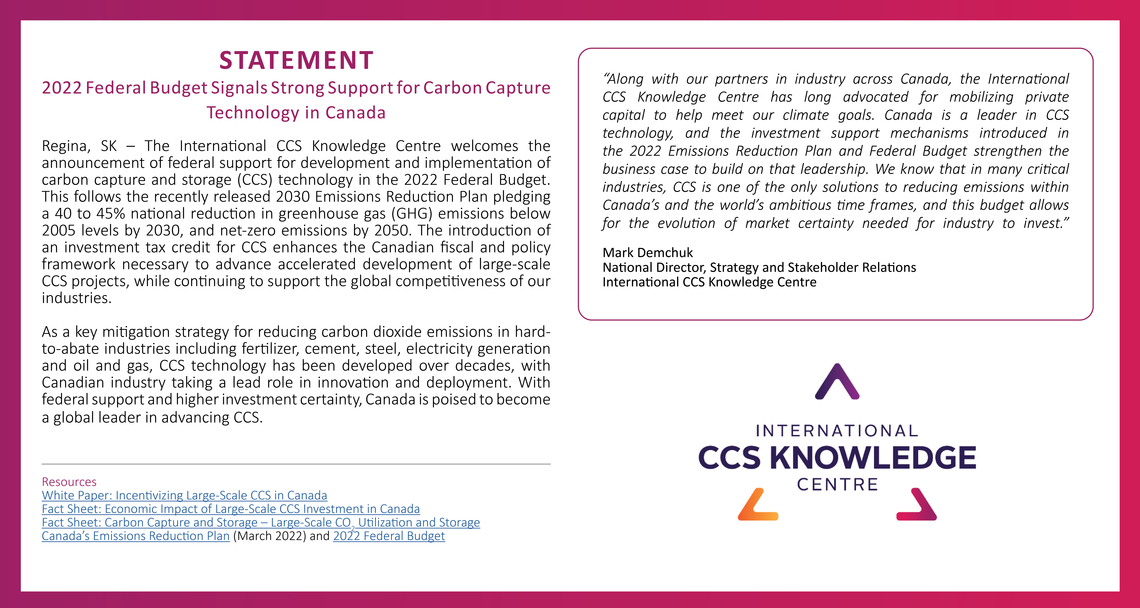Regina, SK – The International CCS Knowledge Centre welcomes the announcement of federal support for development and implementation of carbon capture and storage (CCS) technology in the 2022 Federal Budget. This follows the recently released 2030 Emissions Reduction Plan pledging a 40 to 45% national reduction in greenhouse gas (GHG) emissions below 2005 levels by 2030, and net-zero emissions by 2050. The introduction of an investment tax credit for CCS enhances the Canadian fiscal and policy framework necessary to advance accelerated development of large-scale CCS projects, while continuing to support the global competitiveness of our industries.
As a key mitigation strategy for reducing carbon dioxide emissions in hard-to-abate industries including fertilizer, cement, steel, electricity generation and oil and gas, CCS technology has been developed over decades, with Canadian industry taking a lead role in innovation and deployment. With federal support and higher investment certainty, Canada is poised to become a global leader in advancing CCS.
Quote
Along with our partners in industry across Canada, the International CCS Knowledge Centre has long advocated for mobilizing private capital to help meet our climate goals. Canada is a leader in CCS technology, and the investment support mechanisms introduced in the 2022 Emissions Reduction Plan and Federal Budget strengthen the business case to build on that leadership. We know that in many critical industries, CCS is one of the only solutions to reducing emissions within Canada’s and the world’s ambitious time frames, and this budget allows for the evolution of market certainty needed for industry to invest.
Mark Demchuk
National Director, Strategy and Stakeholder Relations
International CCS Knowledge Centre
—
Resources
White Paper: Incentivizing Large-Scale CCS in Canada
Fact Sheet: Economic Impact of Large-Scale CCS Investment in Canada
Fact Sheet: Carbon Capture and Storage – Large-Scale CO2 Utilization and Storage
Canada’s Emissions Reduction Plan (March 2022) and 2022 Federal Budget
